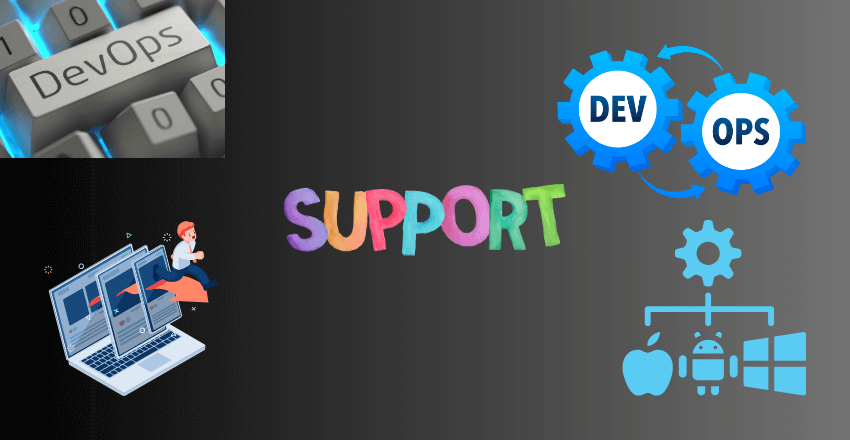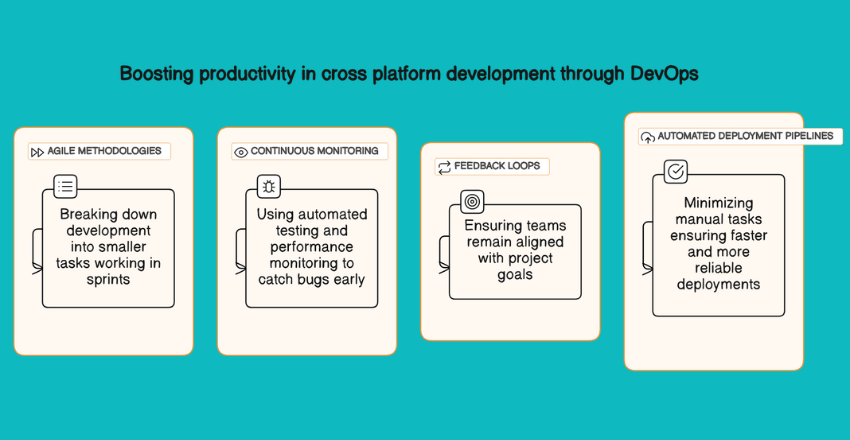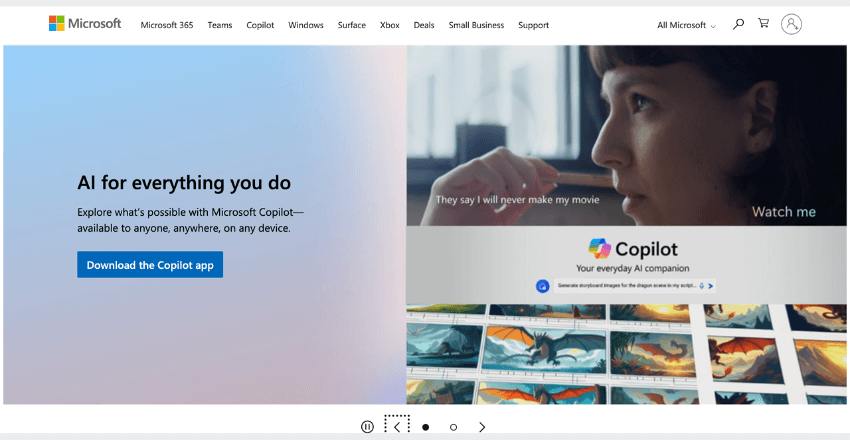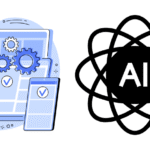
How can DevOps support cross-platform development? DevOps can support cross-platform development by fostering collaboration, automating workflows, and ensuring consistent deployments across all target platforms efficiently.
However, with this comes the challenge of managing multiple platforms and ensuring consistency in the development process. This is where DevOps comes in. DevOps is a set of practices that seek to unify software development and operations, enabling faster and more efficient software delivery.
When it comes to cross-platform development, DevOps can provide numerous benefits, from streamlining processes to boosting productivity and enhancing software quality. By leveraging DevOps practices and tools, businesses can successfully manage multi-platform projects and achieve their goals.
DevOps in the context of cross-platform development
DevOps is a modern software development approach that focuses on collaboration, integration, and automation between development and operations teams. It has become increasingly popular in cross-platform development, where teams need to work seamlessly across different platforms and devices.
DevOps for cross-platform development involves adopting a culture of continuous improvement, leveraging automation, and implementing tools that align with the needs of multi-platform projects. In this way, DevOps can streamline processes, improve productivity, and enhance software quality in cross-platform development.
Streamlining processes with DevOps for cross-platform development

DevOps practices can significantly streamline processes in cross-platform development projects, optimizing efficiency and reducing errors. Version control systems, automated testing, and deployment pipelines are some of the key tools that can help achieve this goal.
Version control systems
Version control systems, such as Git, allow developers to manage changes to code and collaborate on projects efficiently. By implementing best practices for branching and merging, teams can work together without running into conflicts or errors.
Version control also helps developers track changes over time, making it easier to identify and fix issues. By rolling back to previous versions of the code, developers can quickly fix problems and get projects back on track.
Automated testing

Automated testing is a critical part of DevOps for cross-platform development. By automating unit tests, integration tests, and acceptance tests, developers can catch bugs early in the development cycle.
Automated testing also helps ensure that code changes do not introduce new bugs or regressions. Continuous testing allows developers to make changes with confidence, knowing that their code is still working as intended.
Deployment pipelines
Deployment pipelines allow developers to automate the process of building, testing, and deploying code changes. By setting up a pipeline that automatically deploys changes to multiple platforms, developers can save time and reduce the risk of errors.
A deployment pipeline can also include manual testing and approval steps, allowing stakeholders to review changes before they are released. By automating the deployment process, developers can focus on writing code and delivering value to customers.
Boosting productivity in cross-platform development through DevOps

DevOps practices can significantly enhance productivity in cross-platform development projects. By leveraging agile methodologies, continuous monitoring, and feedback loops, teams can speed up development cycles and deliver quality software in a shorter period.
Agile methodologies involve breaking down development processes into smaller, manageable tasks that can be completed quickly and efficiently. This approach allows teams to work in sprints, delivering small product increments at a faster pace. DevOps integrates well with agile methodologies, with its emphasis on collaboration and automation ensuring that teams can quickly deliver quality code.
Continuous monitoring helps to identify potential issues early on in the development process. By using tools like automated testing and performance monitoring, teams can catch bugs before they become major problems and take corrective action immediately. Continuous feedback loops help to ensure that teams remain aligned and focused on the project goals.
Implementing DevOps in cross-platform development can also help to minimize the time and effort required for manual tasks. For instance, automated deployment pipelines help to ensure faster and more reliable deployments while reducing the risk of human error. This allows teams to focus on more important tasks, such as developing new features and improving software quality.
Code Example:
// code to deploy cross-platform application using automated deployment pipeline
pipeline {
agent any
stages {
stage('Build') {
steps {
echo 'Building application'
}
}
stage('Test') {
steps {
echo 'Running automated tests'
}
}
stage('Deploy') {
steps {
echo 'Deploying to cross-platform devices'
}
}
}
}Implementing DevOps practices in cross-platform development projects can yield significant productivity benefits. By using agile methodologies, continuous monitoring, and feedback loops, teams can speed up development cycles, enhance software quality, and deliver quality software quickly and efficiently.
Enhancing software quality with DevOps in cross-platform development
One of the primary goals of DevOps in cross-platform development is to ensure the quality of the software being developed. Quality assurance is critical in any project, and DevOps practices can help achieve this goal through automated testing, code reviews, and continuous integration.
Automated testing is a key element in ensuring software quality in cross-platform development. Testing can be done across multiple platforms simultaneously, ensuring that the software works as expected on different devices. DevOps teams can use various testing frameworks and tools to automate the testing process and reduce the risk of human error.
Code reviews are another essential aspect of software quality in cross-platform development. Code reviews can help identify potential issues before they become problems. DevOps teams can use code reviews to ensure that all the code written for the project adheres to the organization’s standards and best practices.
Continuous integration (CI) is also an effective method for ensuring software quality in cross-platform development. CI ensures that all code changes are tested and integrated into the project continuously. By doing this, developers can identify and fix issues early on in the development process.
By using DevOps practices to enhance software quality in cross-platform development, teams can reduce the risk of bugs and errors, ultimately leading to a more reliable and user-friendly product.
Leveraging DevOps tools for cross-platform development

DevOps tools and technologies play a crucial role in supporting cross-platform development projects. These tools automate processes and help teams collaborate more efficiently, allowing for faster delivery of high-quality software.
One of the most critical DevOps tools for cross-platform development is a version control system (VCS). VCS enables developers to track changes to code and collaborate more effectively, supporting a streamlined development process. Git is a popular VCS tool, widely used by developers worldwide.
Build automation tools are also essential for cross-platform development. These tools automate manual tasks such as testing, building, and deployment, reducing the chances of human error and saving time. Popular build automation tools include Jenkins and GitHub Actions.
Containerization platforms are another crucial DevOps tool for cross-platform development. Containerization enables developers to create, ship, and run software applications consistently across different platforms and environments. Docker is one of the most widely used containerization platforms in the industry.
Example of using Docker for cross-platform development:
With Docker, developers can create a container that contains all the necessary dependencies and libraries required for their application. They can then use this container to run their application on any platform, without worrying about compatibility issues.
For example, a developer working on a mobile app that runs on both iOS and Android platforms can use Docker to ensure that the app runs consistently and smoothly on both platforms. By creating a container that contains all the necessary dependencies, the developer can test the app on both platforms without worrying about platform-specific issues.
Overall, leveraging DevOps tools such as version control systems, build automation tools, and containerization platforms is critical for supporting cross-platform development projects. These tools enable developers to collaborate more effectively and automate manual tasks, resulting in faster delivery of high-quality software.

Best practices for implementing DevOps in cross-platform development
Implementing DevOps in cross-platform development requires a systematic and collaborative approach. Here are some best practices to follow:
- Establish a culture of collaboration: DevOps is all about collaboration between development, operations, and other stakeholders. Create an environment that fosters open communication, mutual respect, and shared ownership of the project. Encourage teams to work together, share knowledge, and take ownership of issues and solutions.
- Use agile methodologies: Agile methodologies, such as Scrum and Kanban, enable teams to work in short sprints, deliver incremental value, and collaborate effectively. Use tools like Jira, Trello, or Asana to manage the project, track progress, and communicate with the team.
- Automate as much as possible: Automation reduces manual effort, minimizes errors, and speeds up development cycles. Use tools like Jenkins, GitLab, or CircleCI to automate testing, building, and deployment processes. Use infrastructure-as-code platforms like Docker or Kubernetes to automate infrastructure and configuration management.
- Continuously monitor and improve: Monitor the project’s progress, performance, and quality metrics regularly. Use tools like Prometheus, Grafana, or ELK stack to analyze logs, metrics, and traces. Conduct regular retrospectives to identify areas for improvement and implement feedback loops to drive continuous improvement.
- Encourage a DevOps mindset: DevOps is a cultural and organizational change, not just a set of tools and practices. Encourage teams to adopt a DevOps mindset, i.e., focus on delivering value to the customer, take ownership of the project, and continuously learn and improve.
Following these best practices can help ensure a successful implementation of DevOps in cross-platform development projects. However, it’s important to remember that every project is unique, and the implementation of DevOps should be tailored to the specific needs and constraints of the project.
Overcoming Challenges in Implementing DevOps for Cross-Platform Development

Implementing DevOps in cross-platform development can come with various challenges. Below are some common challenges and strategies for addressing them.
1. Resistance to Change
Resistance to change is a common challenge when implementing DevOps practices. Stakeholders may be hesitant to abandon their current development processes or may not see the value in adopting new ones. To overcome this challenge, it’s essential to have clear communication and demonstrate the benefits of DevOps through concrete examples. It may be helpful to start small by implementing DevOps practices in a single project or team before scaling up.
2. Integration with Legacy Systems
Integration with legacy systems can be a significant barrier to implementing DevOps in cross-platform development. To address this challenge, it’s essential to have a comprehensive understanding of existing systems and their dependencies. Conduct thorough testing to ensure that DevOps practices can be integrated without adversely affecting the existing system.
3. Skill Gaps
Skilled personnel with experience in cross-platform development and DevOps practices may be hard to come by. It’s essential to invest in training and upskilling existing personnel to ensure they have the necessary skills to implement DevOps effectively. Outsourcing to DevOps experts can also be a viable option.
4. Lack of Collaboration and Coordination
Effective collaboration and coordination are essential for DevOps practices to be successful. Cross-platform development often involves multiple teams working on different components of the project, which can lead to silos and a lack of communication. Encouraging a culture of collaboration, using collaborative tools, and regular team retrospectives can help overcome this challenge.
DevOps can streamline processes, boost productivity, and enhance software quality in cross-platform development. However, it’s essential to address the challenges that arise during implementation to realize these benefits fully.
Examples of Implementation of DevOps in Cross-Platform Development
Examples of DevOps in cross-platform development demonstrate how its implementation can have a significant positive impact on projects.
1: Netflix

As a widely popular streaming platform, Netflix recognized the need for DevOps to optimize its cross-platform development. By implementing DevOps practices, the company was able to streamline its deployment pipeline and reduce errors, resulting in faster innovation and global reach.
2: Microsoft

Microsoft’s adoption of DevOps practices in cross-platform development resulted in higher quality software and improved customer satisfaction. The integration of automated testing and continuous integration allowed for faster feature delivery and more efficient collaboration among its teams.
3: Target

Target’s implementation of DevOps in cross-platform development improved collaboration among teams and allowed for faster and more efficient problem-solving. The company’s use of automated testing and continuous monitoring helped catch issues earlier in the development process, resulting in higher quality products delivered at a faster pace.
Final Thoughts
DevOps practices are critical for supporting cross-platform app development. By providing benefits such as improved efficiency, better productivity, and higher software quality, DevOps can help businesses achieve success in the highly competitive landscape of multi-platform development.
At Hire Cross Platform Developer, we understand the importance of DevOps in cross-platform development and offer outsourced cross-platform app developers skilled in utilizing these practices to drive successful projects. Contact us today to learn more about how we can help you achieve your cross-platform development goals.
External Resources
https://www.atlassian.com/agile#:~:text=The%20Agile%20methodology%20is%20a,READ%20ON%20BELOW
https://slack.com/blog/collaboration/culture-collaboration-work
FAQ

FAQ 1: What is the role of Continuous Integration (CI) in supporting cross-platform development in a DevOps environment?
Answer:
Continuous Integration (CI) plays a critical role in cross-platform development by automatically building and testing code changes across multiple platforms. This ensures that code works as expected on all target platforms before it is merged into the main branch, significantly reducing integration issues. Tools like Jenkins, Travis CI, and GitHub Actions can be configured for cross-platform builds and tests.
Code Sample: GitHub Actions for Cross-Platform CI
name: Cross-Platform Build and Test
on: [push, pull_request]
jobs:
build:
runs-on: ubuntu-latest
strategy:
matrix:
node-version: [14.x]
platform: [ubuntu-latest, windows-latest, macos-latest]
steps:
- uses: actions/checkout@v2
- name: Use Node.js ${{ matrix.node-version }}
uses: actions/setup-node@v1
with:
node-version: ${{ matrix.node-version }}
- name: Install dependencies
run: npm install
- name: Run tests
run: npm test
- name: Build
run: npm buildExplanation:
This GitHub Actions workflow demonstrates how to set up CI for cross-platform development. It triggers on every push or pull request, running build and test commands across Ubuntu, Windows, and macOS platforms.
This ensures compatibility and helps catch platform-specific issues early in the development process.
FAQ 2: How can Infrastructure as Code (IaC) benefit cross-platform development teams?
Answer:
Infrastructure as Code (IaC) allows DevOps teams to automatically manage and provision the testing and production environments through code. This ensures consistency across development, testing, and production environments, reducing the “it works on my machine” problem. Tools like Terraform or AWS CloudFormation can define infrastructure needed for cross-platform applications, ensuring that all team members work with identical configurations.
Code Sample: Terraform for Provisioning Cross-Platform Environments
resource "aws_instance" "app_server" {
ami = "ami-0c55b159cbfafe1f0"
instance_type = "t2.micro"
tags = {
Name = "CrossPlatformAppServer"
}
}Explanation:
This Terraform code snippet demonstrates provisioning a basic AWS EC2 instance that could serve as part of the infrastructure for a cross-platform application. By using IaC, teams ensure that every member and every phase of the development lifecycle uses the same infrastructure setup, reducing discrepancies and increasing deployment reliability.
FAQ 3: How do automated deployments support cross-platform development?
Answer:
Automated deployments enable consistent and reliable delivery of cross-platform applications by automatically deploying applications to different environments (e.g., staging, production) across multiple platforms. This practice, part of Continuous Deployment, minimizes human error and speeds up the release process. Tools like Spinnaker, GitLab CI/CD, and Azure DevOps can be configured for multi-platform deployments.
Code Sample: GitLab CI/CD for Automated Cross-Platform Deployment
deploy_to_production:
stage: deploy
script:
- echo "Deploying application to production server..."
environment:
name: production
only:
- masterExplanation:
This simplified GitLab CI/CD pipeline configuration demonstrates an automated deployment job that runs when changes are merged into the master branch.
While this example shows a basic deployment command, in practice, the deployment would involve more complex scripts tailored to deploy the application across various platforms, ensuring that the latest version is always available to users regardless of the platform.

Charlotte Williams is a talented technical author specializing in cross-platform app development. With a diverse professional background, she has gained valuable experience at renowned companies such as Alibaba and Accenture. Charlotte’s journey in the tech industry began as a mobile UX designer back in 2007, allowing her to develop a keen understanding of user-centric app design.
Proficient in utilizing frameworks like React Native and Flutter, Charlotte excels in building cross-platform mobile apps and imparting her knowledge to aspiring developers. She pursued a degree in Computer Science at Cornell University, equipping her with a strong foundation in the field. Residing in San Francisco with her three beloved dogs, she finds solace in hiking the hills and connecting with nature. Charlotte’s passion for app development, combined with her dedication to sharing expertise, makes her an invaluable resource in the world of cross-platform app development.






